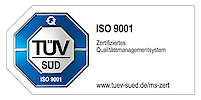Information about breast enlargement
What is breast enlargement?
Breast enlargement or breast augmentation involves inserting implants, usually made of silicone, into the female breasts. Breast enlargement is the most commonly performed cosmetic surgery.
The breast, which has always been a symbol of femininity, plays an important role in a woman's self-image. Dissatisfaction with one's own breasts can be a psychological burden for some women.
The aim of breast enlargement is to emphasize a woman's natural beauty and increase her self-confidence by maintaining natural body proportions. For this reason, a good doctor should strictly reject unrealistic ideas about the expected size, as these can lead to complications and health problems.
What are the reasons for breast enlargement?
Breast enlargement is mainly performed for aesthetic reasons. Most women seek out a cosmetic surgeon when they feel their breasts are too small or when their breasts have changed shape, e.g. after pregnancy. But deformities, uneven breasts or a breast amputation are also reasons for breast augmentation or breast reconstruction.
What examinations are carried out before breast augmentation?
For the best possible result, it is important that the doctor you choose takes the time to have a detailed consultation with the patient. During this consultation, the woman should be informed about the procedure and the possible surgical techniques, as well as asked about her medical history.
A general physical examination by the surgeon is also a prerequisite. Based on the condition of the breasts and skin, the doctor then decides on the most suitable surgical procedure, which should be determined individually for each patient.
Since the operation is carried out under general anesthesia, a preoperative examination by the family doctor is necessary. This should include, among other things, a laboratory diagnosis and electrocardiogram (ECG).
Depending on their age, some patients will need to be examined for breast diseases. This includes an ultrasound scan and a mammogram.
How does breast enlargement work?
Breast enlargement is performed as an inpatient procedure under general anesthesia. The hospital stay after the operation can be up to three days. Depending on the implant chosen, different breast enlargement procedures are used.
Breast enlargement with silicone implants
When using silicone implants, the incision can be made in three ways. It can be made either in the under-breast fold (inframammary), through the areola (transareolar) or in the armpit (transaxillary).
After the incision, the surgeon lifts the breast tissue, creating a pocket into which the implant is inserted. This can be done in two ways. Firstly, the implant can be inserted under the pectoral muscle (submuscular). This procedure is particularly suitable for very thin women as it reduces the palpability of the implant. This procedure also makes subsequent mammography easier. A second option is to place the implant under the mammary gland above the pectoral muscle (subglandular). This procedure is similar to the natural breast. The disadvantage, however, is that the implant could be palpable in this way.
Breast augmentation with your own fat
Breast augmentation with your own fat is well suited to correcting asymmetries (when one breast is larger than the other) or when the breast is sagging, e.g. after weight loss.
What are the risks of breast enlargement with silicone?
Breast enlargement is a widespread aesthetic procedure with a low surgical risk. Thanks to the medical and technical development of the procedure, patients today enjoy optimal results. Modern implants are generally not palpable and their consistency is indistinguishable from that of a natural breast. After the procedure, the natural breast shape is retained and the desired breast size is achieved.
As with any surgical procedure, breast enlargement is associated with a certain surgical risk, which should be clarified with the attending physician before the procedure. The most common complication after breast enlargement is capsular fibrosis. The implant is a foreign body for our organism. Like any foreign body, it is surrounded by a layer of connective tissue during the healing process. In some cases, this capsule can harden and lead to breast deformation and pain.
Breast enlargement aftercare: What should be considered after breast enlargement surgery?
Immediately after the operation, slight pain is to be expected, but this will disappear after a few days. After the procedure, patients are given a pressure bandage. After a few days, this is replaced with a medical bra. For the first three weeks, this bra is worn around the clock, then only during the day. After about a month, the encapsulation of the implants is complete. To prevent capsular fibrosis, the breast can be massaged according to the doctor's instructions. It can take a few months for the breast to return to its original consistency.
When should a silicone implant be replaced?
The procedure offers permanent results that can last for ten to fifteen years. After this, it is recommended to replace the implants, as their quality changes after this time and the risk of rupture increases. The change in the shape of the breast, caused by the natural aging process and gravity, also makes an implant replacement necessary after this time.
The doctors at the Bonn University Hospital are one of the best specialists in breast augmentation in Germany.
What you should pay attention to as a patient is the specialist training of the doctor. Since the term cosmetic surgeon is not protected, any doctor can call themselves one. But only specialists in plastic and aesthetic surgery have completed the 6-year training to become a "cosmetic surgeon". That is why they are the right people to contact for breast augmentation.
But specialists in gynecology and senology can also carry out breast operations professionally, as they are specialists in the female breast. A good indicator of a doctor's experience for a particular operation is the number of procedures performed each year. That is why it is advisable to get a personal impression of the surgeon before a breast augmentation.
















